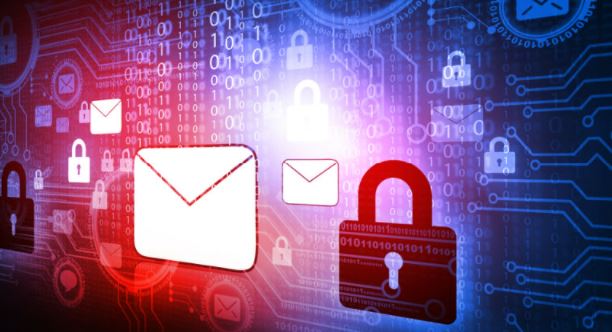Cybersecurity threats are a constant presence in today’s digital world. For businesses of all sizes, keeping data secure is a top priority. However, that doesn’t mean that smaller organizations are immune from cyber attacks or insider threats. In fact, it’s often small businesses that have the most to lose from a cybersecurity breach. Smaller businesses may also lack the resources and funding of larger corporations that make them particularly susceptible to an attack on their email system. It goes without saying that safeguarding your business communications is essential for any organization that wants to remain competitive and succeed long term. While it may feel like there are an abundance of email security measures you can take, here are five helpful tips for keeping your business safe from cyber threats:

Update Your Software Immediately
One of the most common email security issues is outdated software that’s no longer supported. Without regular updates, software will become outdated and will be vulnerable to attack. This can include both the software that your employees use to send and receive emails as well as the email servers themselves. Once again, this is an issue that is particularly prevalent in smaller businesses that may lack the resources of larger corporations. Email security best practices include keeping all software updated and installing patches as soon as they become available. This will help protect against vulnerabilities in software and will be essential for keeping your communications safe and secure. At the same time, modern email security solutions are constantly evolving. As new threats emerge and security features improve, your solution should be regularly updated to ensure that you’re protected against the latest threats.
Train Your Employees
Your employees are your most valuable asset, but they are also a potential threat. While smaller organizations may be more laid back in their culture, it’s important to instill a strong sense of cybersecurity best practices among your employees. This includes regular training sessions on cybersecurity and the importance of protecting sensitive information. It’s also a good idea to make cybersecurity a part of your hiring process to ensure that new hires are well-versed in best practices from the get-go. In general, it’s important to use caution when sending and receiving emails. While it’s often tempting to hit “reply all” on sensitive emails, it’s important to avoid this. It’s also important to keep in mind that email archiving and retention policies can pose a risk to your security. Make sure you’re following best practices for securely managing email records so that your business is protected from data breaches.
Use Strong User Authentication
User authentication is one of the most basic email security measures. When deciding which authentication method you should use, it’s important to consider your business requirements. For example, if you operate in regulated industries (such as healthcare or financial services) that require specific data security standards, you may be required to use certain authentication methods. While there are many authentication methods available, it’s important to use two-factor authentication whenever possible. Two-factor authentication (or 2FA) takes your authentication one step further by requiring a second form of authentication in addition to your login credentials. This can include using a fingerprint reader, security token, or receiving a code via text message. While two-factor authentication can be a bit of a hassle in terms of additional steps, it will greatly improve the security of your system while also making your login process easier to navigate.
Encrypt Your Data
Email encryption is an essential component of any security strategy. Whether you choose to integrate encryption into your existing email platform or select a new solution, you should always be encrypting your email communications. Different encryption methods are available, including single-end and end-to-end encryption. Single-end encryption provides protection for your data, but it doesn’t guarantee that the recipient will be able to read the message. This is the most common type of encryption and is often used for protecting data in transit. End-to-end encryption, on the other hand, protects sensitive data all the way from one end (such as from the sender’s device to the recipient’s device) to the other end (the recipient’s device) without being decrypted along the way. When choosing an encryption solution, make sure that it’s easy to integrate with your existing platforms and can be applied to all of your communications.
Implement Collaborative Platforms
If your business regularly collaborates with others, you may want to consider a solution that offers built-in collaboration tools and file sharing capabilities. Collaborative platforms help you to organize and track your work with team members and partners while also protecting your sensitive data and documents. This is particularly important if you regularly collaborate with clients or engage with vendors. Collaborative platforms can also help you to reduce email communications and can be a helpful addition to any email security strategy. With a collaborative platform, you can create secure online workspaces where you can store and share sensitive information with your team members and clients.
Conclusion
Your email communications are the lifeblood of your business. While email security can sometimes feel like an uphill battle, it’s important to keep these tips in mind. If you follow these five tips for improving your email security, you’ll be well positioned to protect your business from cyber threats.

Working as a cyber security solutions architect, Alisa focuses on application and network security. Before joining us she held a cyber security researcher positions within a variety of cyber security start-ups. She also experience in different industry domains like finance, healthcare and consumer products.











